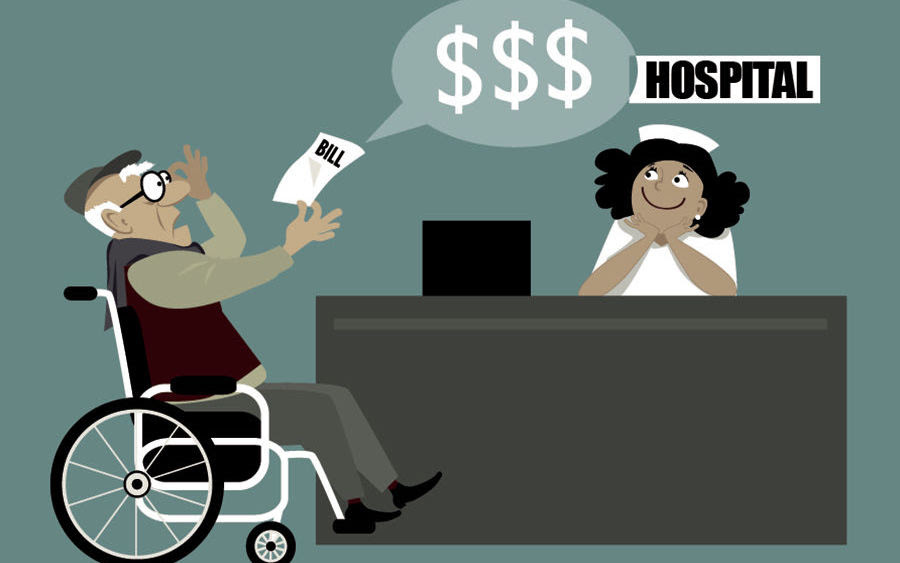Bundled Payments Streamline Care, Improve Access, Making Patients and Doctors Advocates
By Scott Leggett
Dean Chavez never wanted to see the inside of another hospital after being laid up years ago by a motorcycle accident. But when his doctor recently told him he needed a total hip replacement, he at least hoped the experience would be quick and easy.
It was both, thanks to bundled payments, an emerging model of healthcare that packages and coordinates procedures as a single purchase.
Chavez said there were a couple of phone calls, a little consultation, the surgery — “and that was it!” No barrage of bills, no explaining his situation to one team of medical providers after another.
“It was easy. Piece of cake,” he said, adding that bundled payments “definitely” streamlined his surgical procedure experience, and that he would recommend it to family and friends.
If the kind of service Chavez received seems foreign to other patients, odds are they haven’t heard of bundled payments.
This expanding model for healthcare reimbursements benefits patients more directly — and on a more intuitive level — than the common alternatives of traditional fee for service and capitation. Bundled payments basically offer streamlined care that’s easy to access.
The simplicity is appealing. Medical providers team up to treat a condition such as Chavez’s total hip arthroplasty, from pre-operative work through the final visit to the physical therapist. Together these collaborations compete against other programs in their region on the basis of cost, medical outcomes and patient satisfaction.
Think of it like buying a car, or going out to a restaurant. We don’t purchase a tire from one supplier and the steering wheel from somewhere else, just as we wouldn’t expect to order a steak from one diner then cross the street to get a side dish. One package, one price.
Giving Patients Clarity
The bundled payments system gives patients clarity where they previously had none. Bundled prices are set out ahead of time, with a single out-of-pocket expense rather than trickles of multiple bills over months and months. Some employers are even waiving that out- of-pocket expense for workers who elect to use a bundled payment program.
Meanwhile, patients receive a start-to-finish treatment and recovery plan. Goals are specified in terms important to them, such as pain reduction or restored mobility.
With greater transparency also comes unity of purpose — a teamwork ethic — rarely seen by many healthcare consumers. Providers work together on a shared vision for getting the patient better.
“This model is about improving patient care,” wrote Patrick Conway, MD, former principal deputy administrator and chief medical officer at the Centers for Medicare & Medicaid Services (CMS), referring to bundled payments. “Patients want high-quality, coordinated care — not just for a day, but for an entire episode of care.”
Of course they do. They’re just not used to it.
Under the fee-for-service system, patients became accustomed to a time-consuming schedule of medical appointments, some of questionable value. It was rare that people at the physical therapy office knew anyone at the home health agency.
Capitation was hardly an improvement. The healthcare system’s driving incentive was no longer to maximize volume of service, but to pare back wherever possible. Patients were penalized for going outside their network for higher-quality care.
With consumer feedback diluted in large populations, consumers were left wondering how much their satisfaction really matters.
A better model did emerge, but until recently it was limited to certain corners of healthcare. Bundled payments became common in knee replacements, organ transplantation and Lasik eye surgery.
The system’s advantages are evident within the healthcare industry, following highly successful experiences over more than a quarter century. Demonstrations in different states and countries have achieved substantial savings while improving medical outcomes and patient satisfaction. CMS has seen success with bundled payments and has indicated it will continue to incentivize their use.
“Stress Relief”
In an early test of bundled payments, between 1991 and 1996, CMS paid for all services required for coronary artery bypass graft surgery, plus 90 days of post-discharge services, in a lump sum. Every participating hospital reported lower inpatient mortality rates and higher patient satisfaction.
More recently, the Swedish County of Stockholm started covering healthy patients’ hip and knee replacements using bundled payments in 2009. Within two years, medical complications were down a third. It has since applied the reimbursement system to other conditions.
As results like these have stacked up, large employers like Lowe’s have begun bundled-payment contracting for certain procedures. Industry observers see the trend growing not just in volume but in other areas of medicine, including treatment of chronic diseases.
A final advantage deserving mention is the effect bundled payments have on premiums. As a system of financial incentives, it does more than traditional arrangements to limit premiums paid by patients and their employers — all while promoting higher standards of care.
For his part, Chavez said he appreciated the simplicity bundled payments offered him, along with the “stress relief” of not getting bills for things insurance doesn’t cover.
The arrangement also came with the personal benefit of being cared for by professionals who are used to working together for maximum patient comfort.
“My experience at the surgery center was the staff was great, answered every question and then some,” he said. “I knew exactly what was coming up and what to do. Everyone was pleasant along the way.”



